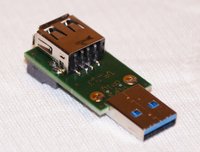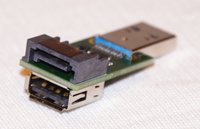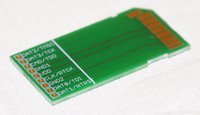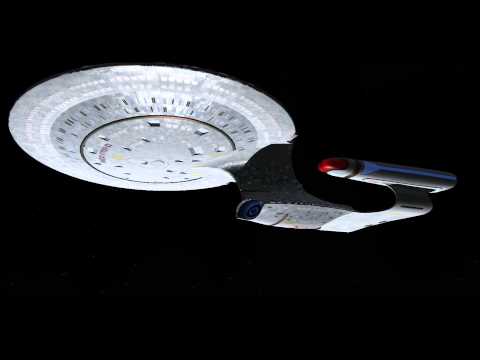Well, I'm back! Not from the dead, but as I didn't really visit the boards or IRC a lot lately. I might've felt to some like I was dead.
I'm doing fine, no worries. But the shop was swamped with orders until two days ago (I was packing and shipping 40 - 100 orders per day!) that I didn't find the time for much else.
Thankfully, things are back to normal again, so here I am! And I brought some news with me, as things have not stopped in Pyra development.
1. The SATA-Adaptor
Not everyone is interested in one, I guess, but the SATA-Adaptor has mostly been finished.
It plugs into the USB-Port of the Pyra and splits the signal to both USB 2.0 and SATA.
Keep in mind that it's only for the Pyra.
I'll create a small case for it which you can either print yourself or maybe I'll do an injection mould plastic of it as well (depends on the demand and costs).


2. JTAG
There's no direct JTAG connection on the Pyra PCBs (we didn't have enough space), but the SD-Card slot can be used for it!
All you need to do is boot a special kernel and use this simple SD-to-JTAG-Adaptor.

This is helpful for everyone who wants to do some low-level hardware debugging.
3. The CPU-Board fixes
Nikolaus has used the last few days to vastly improve the VIA- and capacitor-setups on the CPU-Board.
He's rechecking it currently to make sure it's the best we can achieve with the current layout.
After that, as mentioned in the last post, it will be sent to a community member who can run a simulation on it which will show us the improvements and make sure it's good enough for the full 1,5GHz speed.
4. And the rest...?
Well, all companies involved in the Pyra production had holidays, and like most companies here, they'll resume work on Monday.
Then I'll bugger them all to move ahead with full speed, and of course I'll keep you informed.
Oh, and by the way: A happy New Year 2017
May our journey finally bring us to the finish line
I'm doing fine, no worries. But the shop was swamped with orders until two days ago (I was packing and shipping 40 - 100 orders per day!) that I didn't find the time for much else.
Thankfully, things are back to normal again, so here I am! And I brought some news with me, as things have not stopped in Pyra development.
1. The SATA-Adaptor
Not everyone is interested in one, I guess, but the SATA-Adaptor has mostly been finished.
It plugs into the USB-Port of the Pyra and splits the signal to both USB 2.0 and SATA.
Keep in mind that it's only for the Pyra.
I'll create a small case for it which you can either print yourself or maybe I'll do an injection mould plastic of it as well (depends on the demand and costs).


2. JTAG
There's no direct JTAG connection on the Pyra PCBs (we didn't have enough space), but the SD-Card slot can be used for it!
All you need to do is boot a special kernel and use this simple SD-to-JTAG-Adaptor.

This is helpful for everyone who wants to do some low-level hardware debugging.
3. The CPU-Board fixes
Nikolaus has used the last few days to vastly improve the VIA- and capacitor-setups on the CPU-Board.
He's rechecking it currently to make sure it's the best we can achieve with the current layout.
After that, as mentioned in the last post, it will be sent to a community member who can run a simulation on it which will show us the improvements and make sure it's good enough for the full 1,5GHz speed.
4. And the rest...?
Well, all companies involved in the Pyra production had holidays, and like most companies here, they'll resume work on Monday.
Then I'll bugger them all to move ahead with full speed, and of course I'll keep you informed.
Oh, and by the way: A happy New Year 2017
May our journey finally bring us to the finish line







